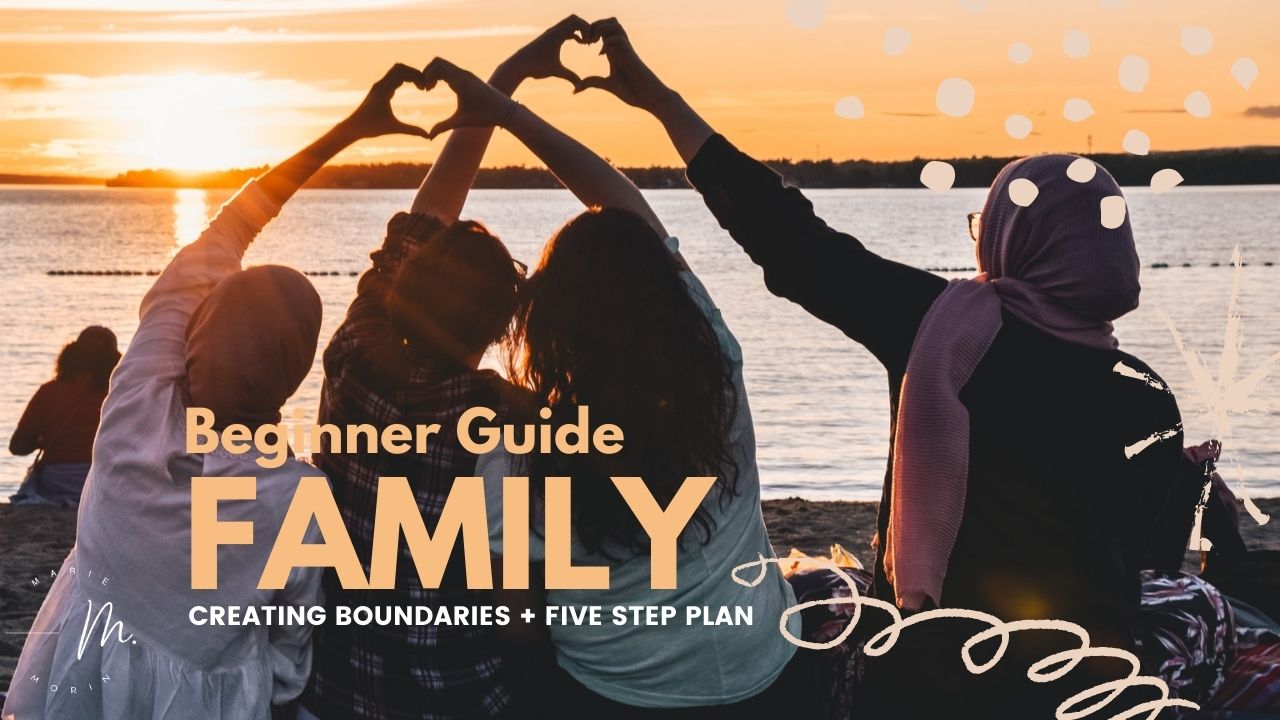Boundaries in families are necessary for thriving relationships. The good news is, there are strategies to get your boundary-creating and maintaining journey started. The not-so-good news is that there is no magic bullet, and it takes time. This article discusses questions such as, “is it ok to set boundaries with family?” and “how do I know If I need to set boundaries? Included is a five-step plan on how you establish boundaries with family.
Is it Ok to Set Boundaries With Family?
Absolutely Yes!! Boundaries are a necessary component of healthy, thriving family relationships. When families can work through the initial discomfort of rocking the status quo, there is an excellent opportunity for more beneficial connections. On the flip side, if the relationship remains the same, one or more is caught in the tide of uncomfortable feelings and unhealthy behaviors.
Feelings can be alerts that something needs to change. When we are very tied to what others think and feel about us, we please others at our own expense.
What are enmeshed boundaries?
Enmeshed boundaries are patterns where two or more family members feel or think they feel the feelings of others. When there is conflict resulting from unclear and porous boundaries, there are heightened reactions.
What Feelings and Behaviors Signal the Need for Boundaries?
How Do I Know If I Need To Set Boundaries?
The feelings and behaviors usually present when you relate with your family can be uncomfortable. Sometimes they can feel wrong, and you may think that they need to be ignored or discounted.
This discomfort is an alert or signal that it’s not ok with you. Unraveling the feelings takes some time, knowledge, and practice. Having support with someone who has experience with boundaries, like a trusted friend, therapist, or coach, can help in this process. Also, having a plan that considers your needs and situation is key to making the changes that will help you.
It would help if you had boundaries when you experience any of the following thoughts, feelings, or behaviors:
- Taking responsibility for the opinions, reactions, or feelings of one or more in your family.
- When allowing others to behave in ways that affect you negatively
- Feeling resentful of someone in your family
- Thinking you need to keep the peace even if it affects you negatively.
- Feeling irritated or angry
- Being overly concerned about what your family members think- and accommodate them to ensure they think well of you
- Saying yes when you mean no, and then indirectly communicating your feelings instead of directly confronting
- You feel you are being taken advantage
- You fear what they might think, feel, or how they would react
- You feel guilty if you don’t do for them or take time to care for yourself
- You often put yourself last
Where do I start?
A huge catalyst to making changes is awareness of critical ideas. The need to create boundaries is about your needs, acknowledging that you matter enough to take the risk. Creating boundaries is risky because your family will likely not be too keen on your rocking the boat.
What has it cost you to stay in the circumstances with your family that cause you discomfort or stress? Thoughtfully answering the following questions is an excellent place to start. After all, if you value your needs, you allow what is essential to you to matter.
- What do you want for yourself?
- If nothing changes, is this best for you?
- What do you not want?
- What are your life values and beliefs?
Consider your core values. A few values are harmony, respect, responsibility, peace, independence, serenity, integrity, and kindness. Sometimes we honorably apply our values with family. It is equally important to apply your core values for your well-being. The ultimate self-care means you are mindfully practicing putting you into the mix.
Love is a value we commonly refer to families. Love is big enough to be about you too.
Five Steps to Prepare for Creating and Maintaining Boundaries
For best results, use a journal to write these steps and keep track of your changes.
- Accept and own a mindset shift that you have a right to your needs being met and honored. Respecting your needs is not selfish despite what you learned or once believed.
- Identify what is keeping you in the behavior- are you afraid of their reaction? Do you believe you are the only one that can do the things you have been doing? Do you think their feelings are your responsibility?
- What has this behavior cost you? Are you exhausted, resentful, overextended, feeling stuck? Do you feel guilty when you want to do anything but what’s been asked or required of you?
- Decide to choose you. Decide that it is time for things to change and the only one that can do this is you.
- Put your boundary plan into action –
a. Journal above steps 1-4
b. Pick one specific area to address.
c. Find the support you need, someone familiar with boundaries and can encourage you in this journey. Find a person who will be in your corner. A coach or therapist can give you skilled support.
d. Start slowly by giving facial cues or expressions that signal saying no gently. Consider limiting your time, not answering the phone or texts immediately.
e. Find a time when you are rested and calm. Resist the temptation to say or do any boundary when there is heightened stress and agitation.
After your plan is all set, you will be ready to create and maintain your boundary. A healthy boundary is clearly stated, easy to remember, and can be followed.
This process won’t be easy. How often have you overcome the stuff that has scared you or has been over the top challenging? Yes- think of all those moments and your wins- remember this strength and bring it with you when you are around your family.
They will likely react – they won’t like it, and they may even kick and scream. You will get through that piece of boundary creating and implementing if you stick to a plan.
Check out my featured article on Sixty and Me titled,
How to Create Healthy Boundaries, So Your Needs are Met.
This article expands on boundaries to help you with your journey.
This article discusses questions such as:
- Is it ok to set boundaries with family?
- How do I know If I need to set boundaries?
- What are enmeshed boundaries?
Included as well is a five-step plan on how you establish boundaries with family.

FREE Five Steps to Prepare for Creating and Maintaining Boundaries Worksheet
Fill up the form below to download your FREE Worksheet









